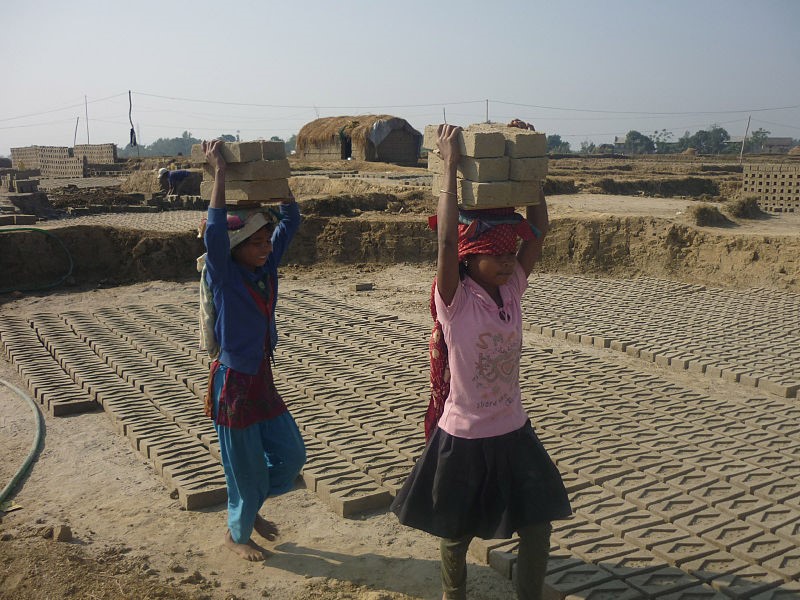PHNOM PENH – June 12th is the World Day Against Child Labor. For at least one day each year, the political elite meet to propose global visions, proposals, and campaigns to eliminate child labor, especially in dangerous places like mines and brick kilns.
Unfortunately, 10-year-old Chheng Srey Pheak will be reminded of the atrocities of child labor every day for the rest of her life as she struggles to survive without her right arm. Her arm was torn from her torso when, “while working alongside her parents, [it] slipped into a clay grinder” that crushed her arm and severed it at her shoulder.
Like many other impoverished children in developing countries, Chheng Srey Pheak worked as a bonded laborer to help her parents to pay off their debts the kiln owner.
The Ministry of Labor and Vocation Training (MOLVT) filed a criminal case against the owner of the kiln and fined him under Article 368 of the Cambodian Labor Law. That law set the minimum age for employment at 15. The employment of children under the age of 18 in hazardous work is prohibited. Working in brick kilns is considered to be hazardous work.
Several years ago, a United States Department of Labor report found the MOLVT to be underfunded. The funding was so insufficient that it was impossible for the lean staff of 39 inspectors to conduct the required number of inspections. This was despite a 4-year, $4.3 million USDOL-funded-project to develop “national capacity to end the worst forms of child labor” from 2008-2012. Elimination of child labor in brick kilns was specifically cited as one of the project’s objectives.
The DOL issued a follow-up report in 2017, noting that Cambodia had made only “moderate advancements in efforts to eliminate the worst forms of child labor” and further noted that brickmaking was still a major user of illegal child labor.
The fine issued against the brick kiln owner was the equivalent of $600 USD. By law, the penalty must be between 31 to 60 times the basic brickmaker’s daily wage.
The government promised to pay all of the child’s hospital bills and grant her disability benefits for the rest of her life.
Despite being charged with the criminal offense of hiring children under the age of 12, the charges against the kiln owner may be dropped. Provincial police “have not yet found it to be a case of hiring child labor.” They report that children work alongside their parents as a normal practice.”
Workers are paid by the number of bricks they produce. When parents realize that it may be impossible for them to generate enough compensation to repay their indebtedness, they allow their children to tag along to help increase their daily production. Radio Free Asia reported cases of children who have grown up in brick factories and are working to pay off debts incurred by their grandparents.
The 2017 USDOL report estimated that 152 million children were engaged in illegal child labor, of which 73 million were engaged in hazardous forms of labor, although no official global estimate of the latter exists.
All we know for sure is that there is one less child working in a brick kiln as of March 9, 2019.
To read more news on child labor on Missions Box, go here.
Sources:
- Radio Free Asia, Cambodia’s Labor Ministry Fines Brick Factory After Girl Loses Arm
- The Phnom Penh Post, Labour Ministry fines brick factory after girl loses arm
- Freedom United, Brick Factory Hit With $600 Fine After Girl Loses Arm
- U.S. Department of Labor’s 2010 Findings on the Worst Forms of Child Labor
- U.S. Department of Labor’s 2017 Findings on the Worst Forms of Child Labor
Image Source:
- Shresthakedar [CC BY-SA 4.0]
